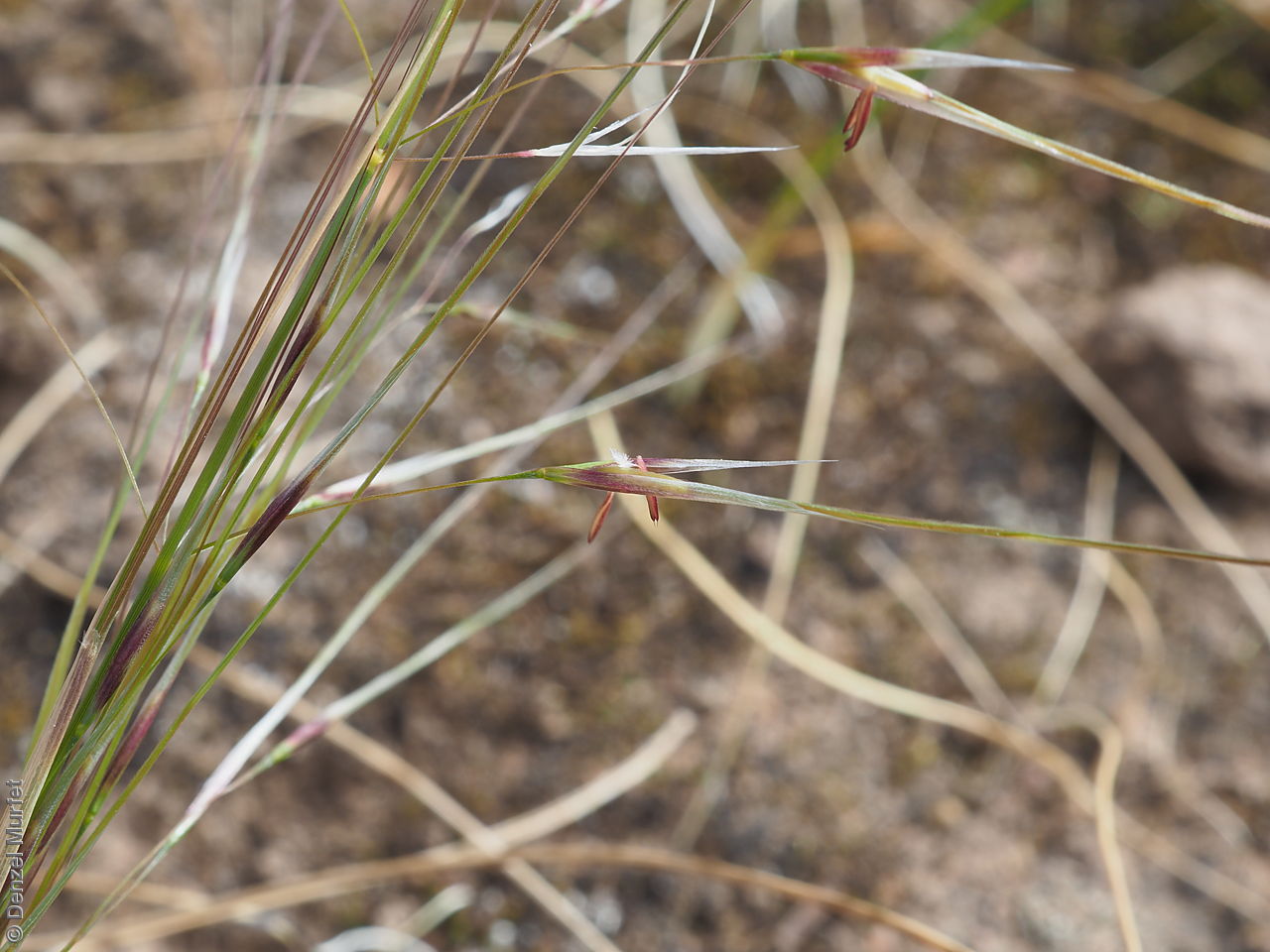

















Botanical art
Prior names
Stipa variabilis, partly
Stipa falcata
Stipa scabra ssp. falcata
Common names
Curved-awn Spear-grass
Slender Spear-grass
Rough Spear-grass
Etymology
Austrostipa from the Latin 'auster' meaning south and the genus Stipa, referring to the genus being allied to Stipa but restricted to Australia. Scabra from the Latin 'scaber' meaning rough to the touch, scurfy, referring to its short stiff hairs or minute projections which are rough to the touch. Falcata from the Latin 'falx' meaning sickle and the suffix '-ata' meaning possessing, referring to its curved awn like a sickle blade..
Distribution and status
Found in the south-eastern part of South Australia, growing in a wide range of habitats and soil types. Also found in Queensland, New South Wales, Victoria and Tasmania. Native. Common in South Australia. Rare in Tasmania. Common in the other states.
Herbarium regions: Lake Eyre, Nullarbor, Flinders Ranges, Eastern, Eyre Peninsula, Northern Lofty, Murray, Yorke Peninsula, Southern Lofty, Kangaroo Island, South Eastern, Green Adelaide
AVH map: SA distribution map (external link)
Plant description
Tufted perennial grass to 70 cm high, with unbranched erect culms and glabrous nodes. Leaves smooth, scabrous or shortly pubescent, with blade inrolled to 15 cm long and 1 mm wide; lobe at mouth of sheath and upper leaf blade short to 1 mm; mouth of sheath hair tufts (auricles). Inflorescence a sparse panicle to 30 cm long with spikelets somewhat spreading; glumes to 15 mm long, usually purplish initially, soon becoming straw-coloured. This subspecies differs from the other subspecies found in South Australia, A. scabra ssp. scabra which has mouth of sheath glabrous or almost so, auricle asymmetrical to 4 mm long; leaf-blades more than 15 cm long; inflorescence typically sparse, narrow, with spikelets appressed to stem. Flowers throughout the year.
Key to this species: awn falcate (curved bristle at right angle to the column); lemma narrow and needle-like; mouth of sheath hairy; auricles < 1mm; leaves short <15 cm; panicle sparse, opening or spreading. Fruits are brown linear-elliptic lemma to 6.5 mm long with a smooth surface and covered in white hairs; callus to 2 mm long; awn falcate to 65 mm long with column scabrous or pubescent, with banded black and yellow veins. Seeds are yellow-brown narrow ellipsoid grain to 3 mm long within the lemma. Seed embryo type is lateral.
Seed collection and propagation
Collect seeds between January and December. Use your hands to gently strip the seeds (lemma) off the mature fruiting spike, those that are turning brown. Mature seeds will come off easily compare to the immature seeds that remain on the spike. Alternatively, you can break off the whole fruit spike to allow some of the seeds to mature further. Place the seeds/spike in a tray and leave to dry for two weeks. No further cleaning is required if only seed collected. If seed spikes collected, use hand to strip off the mature seeds. Store the seeds with a desiccant such as dried silica beads or dry rice, in an air tight container in a cool and dry place. Viability of grass seeds could be very variable, depending on time of seed collections and seasonal conditions.
| Location | No. of seeds (weight grams) | Number of plants | Date collected | Collection number Collection location | Date stored | % Viability | Storage temperature |
|---|---|---|---|---|---|---|---|
| MSB | 4,300 (9.53 g) | 1-Dec-2006 | DJD705 Southern Lofty | ||||
| BGA | 2,400 (6.6 g) | 100+ | 21-Dec-2010 | DJD2090 South Eastern | 1-Jan-2012 | 85% | -18°C |
Number of plants: This is the number of plants from which the seeds were collected.
Collection location: The Herbarium of South Australia's region name.
% Viability: Percentage of filled healthy seeds determined by a cut test or x-ray.